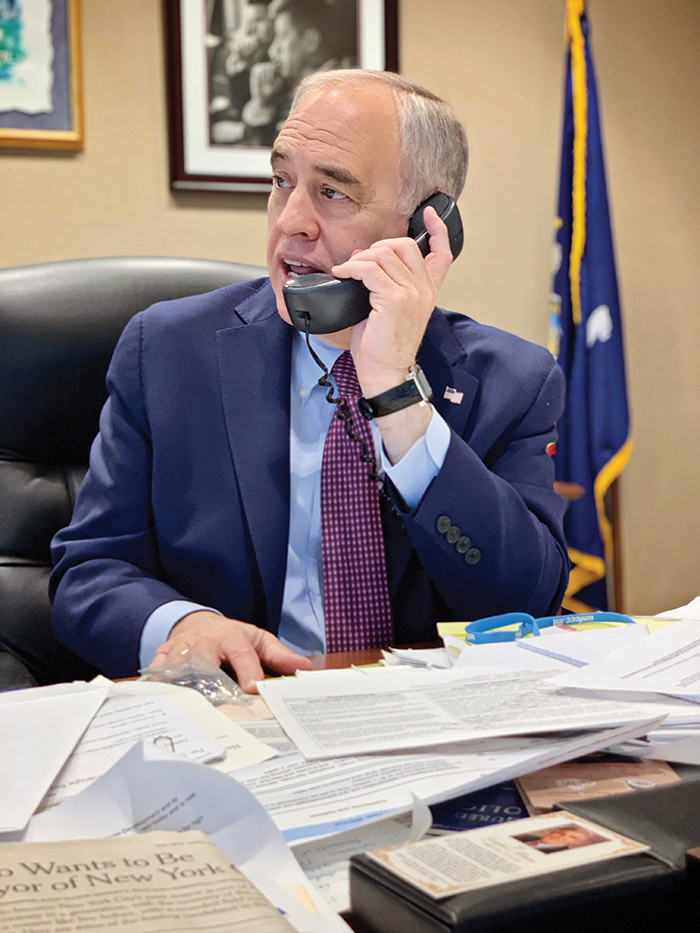Photo Courtesy of Comptroller DiNapoli’s Office
“The City must balance the expansion of services now with the ability to fund these services in the future,” Comptroller DiNapoli said.
By Forum Staff
Stronger-than-projected year-end budgetary results, fueled by extraordinary one-time federal relief, will mostly be used to fund new spending, with a smaller portion set aside to build up reserves, according to an analysis of New York City’s financial plan recently released by State Comptroller TomDiNapoli.
In June, the city adopted its $98.7 billion fiscal year 2022 budget. Excluding federal aid, the city will fund about $2 billion more in spending (excluding funds set aside for reserves) than was planned in the proposed executive budget in April. This is significantly higher than traditional spending increases at this point in the fiscal year.
Since the release of the April financial plan, the city’s short-term financial condition has continued to improve due to better-than-projected revenues, reflecting continued strength in personal income and business tax collections in FY 2021 of $2.1 billion. These revenues come after $15.2 billion in one-time federal relief was incorporated into the city’s April financial plan.
The city used the unanticipated revenue, since April, to increase agency expenditures for FY 2022 by nearly $1.5 billion, more than half of which is spending for new needs ($466 million) and the temporary restoration of planned savings initiatives ($315 million). By FY 2025, the city will still incur more than $1 billion in recurring costs for proposed new services that are supported with nonrecurring federal resources.
City-funded spending growth will reach 7.9 percent in FY 2022 (excluding reserves) to reach $72.6 billion. The growth rate is projected to slow to 2.5 percent in the out-years (excluding labor savings and reserves), but city-funded spending will still grow to $78.3 billion by FY 2025 and does not include out-year funding for new recovery programs and restorations that may be popular and continue past the current budget year.
The choice of continuing these programs will fall to the next administration and the City Council, as they consider their own initiatives to manage shifting service demands. DiNapoli has encouraged the City to use its federal relief for one-time recovery initiatives and to avoid new recurring spending without identifying resources to pay for it.
The city also made a first-of-its-kind $500 million deposit into its Revenue Stabilization Fund (i.e., a rainy-day fund), bringing the fund to $1 billion. It also maintained a general reserve of $300 million in FY 2022. In total, the city’s reserves stand at $5.1 billion when including the balance of $3.8 billion held in the Retiree Health Benefits Trust, higher than at the beginning of FY 2021 but still lower than prior to the pandemic ($6.1 billion).
The June financial plan assumes the city ended FY 2021 with an estimated surplus transfer of $6.1 billion, which will be used to prepay debt service in FY 2022, nearly $2.5 billion more than was anticipated in the April plan. The surplus transfer, which can act as a fiscal buffer, was the highest on record, and will need to be restored to provide future fiscal relief.
“The City must balance the expansion of services now with the ability to fund these services in the future. Recurring spending should match recurring revenue so the city can close its gaps and build back reserves,” DiNapoli said.“Taking these actions should help mitigate future uncertainties so the city may have greater flexibility down the road.”

